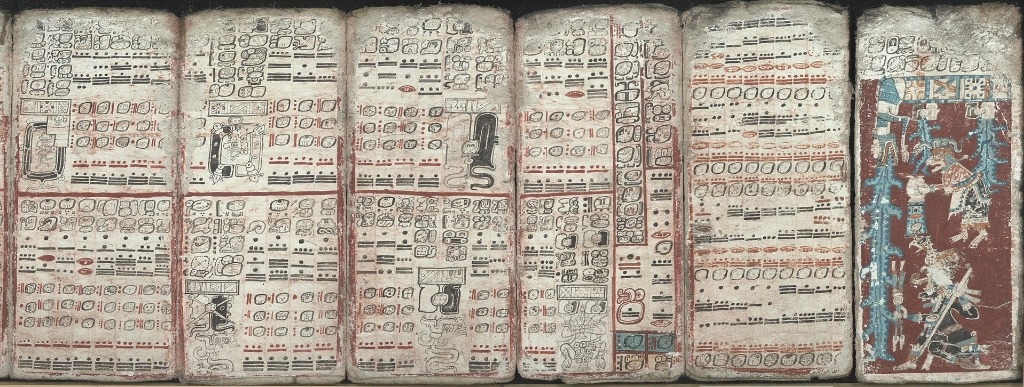The interest of the peoples of Mesoamerica in observing the celestial vault was reflected in codices, inscriptions on buildings and sculptures. Zapotecs, Mexica and Mayans represented Venus, the Moon, the Sun, a starry sky and eclipses in these pieces.
During the talk Eclipses in pre-Hispanic times in Mesoamerica
offered by astrophysicist Jesús Galindo Trejo, organized by the Institute of Aesthetic Research of the National Autonomous University of Mexico (UNAM), images were presented that show how original cultures represented the stars.
Galindo Trejo, doctor in theoretical astrophysics from the Ruhr University of Bochum, Germany, showed the Telleriano-Remesis Codex, which corresponds to 1531. In it a solar disk is observed, with a darkened part, on a starry background and from which volutes emerge. of smoke.
I have chosen this image because it comes from one of the most striking codices, which reports historical situations from before the Conquest and throughout that period. In that year a solar eclipse occurred and then Halley’s Comet appeared.
Then he showed an image of the Mendoza Codex. He pointed out that The drawings were made by the tlacuilos, Mexica painters. Inside the print you can see a darkened semicircular design with multiple eyes, which represents the night.
. Below you can see a priest, seated, with a white robe, observing those eyeballs, which with red eyelids and double concentric circles, in central Mexico are the representation of a star.
Likewise, he showed a detail from the Madrid Codex, in which a Mayan observer of the sky appears; He is a darkened character, surrounded by eyes. The interesting thing is that the epigraphers have identified some rectangles in the lower part, which would indicate that the scene takes place in the sky, because they have representations of the day, the sky, the night and the Moon.
held.
Another image from the Telleriano-Remesis Codex that the researcher presented dates back to the 16th century and shows Tonatiuh (god of the Sun) next to the phrase: all things are said to be produced by the Sun
.
An image of the Borgia Codex, originally from Cholula, also stood out. in which a dark deity is observed, with stellar eyes on the body, while solar discs appear on the hands, feet and knees attacked by other deities, which indicates how an eclipse of the Sun or Moon is designated
.
The specialist exposed the hieroglyph of a sidewalk, from the Mayan city of Copán, in which a man is seen in profile, hugging a rabbit and next to them the glyph of the Moon
.
The mathematical physicist also studied at the National Polytechnic Institute and projected a series of images from the Borbonic and Madrid codices, which represented the creation of the Mesoamerican calendar, since time is an element that was associated with the observation of the stars for the people of that time. region.
From the Zapotec area, the researcher cited a detail from the Nutall Codex, from Oaxaca, in which a starry sky, a solar disk and flow of the same color as the Sun are represented, and for one to see something that comes out of the star, it is only possible in a total solar eclipse
.
The researcher spoke about the chronicles of Fray Bernardino de Sahagún, which referred to the eclipses of the Sun and the Moon, as well as writings in Yucatecan Maya that address this natural phenomenon, or the chronicle of an eclipse in 1611, which is part from the INAH collection.
Galindo Trejo concluded that “for any astronomer, eclipses are of great interest, but it is clear that the quantitative part – astronomy – is not enough to study them; the part that complements becomes necessary: the culture, expressed in murals, codices and representations of the Mesoamerican peoples.”
#Mesoamerican #codices #report #context #eclipses #occurred
– 2024-04-04 20:35:16


